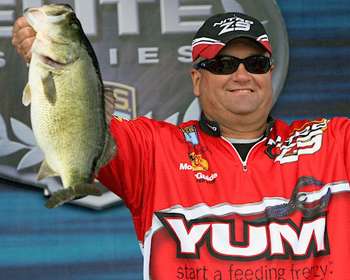
Standing timber and bass fishing go together like peanut butter and jelly. However, that idyllic vision of bass nirvana can become skewed as winter approaches, given that many anglers abandon timber in favor of more typical wintertime haunts.
Texas Elite Series angler Matt Reed suggests that standing timber can remain one of the most productive of wintertime patterns, as long as it's approached in the right way. "If you look at the big picture, each tree in a stand of trees is going to offer a completely different habitat for a bass," he says. "When the water gets cold, the bass will pull out to the edges of the breaks, and they're going to seek out cover along a break line.
If you've been successful in the warmer months in the shallows of a stand of trees, all you need to do is identify where the break lines are, and that's where you'll find the bass." Reed points out that the trees closest to deepwater break lines are easily distinguishable to their size.
"You have to remember that before the lake was formed, the biggest trees were growing on the edges of creek channels," he explains. "You really need to key on the bigger, old-growth hardwood trees because they'll be located where those deepwater depressions or creek channels are. During the winter, bass will really relate to that big wood." Reed explains that by identifying where the creek channel exists, an angler can easily pinpoint where bass are migrating to.
"Bass will use those creek channels like a highway," he says. "As the water cools, they will use the channel to follow the shad. They'll use those bigger trees either as ambush points or staging areas until the water warms and they can move back up." In order to attack the breaklines where bass are holed up this time of the year, Reed usually starts with a jig.
"Depending on the water depth, you could use up to a half-ounce jig to flip to the bases of those big trees," he says. "You really want to try and get your bait down into the root system and let it stay in the strike zone as long as possible." After a slight warming trend, the bass will become a little more aggressive. During those brief periods in winter, when water temperatures rise up to around 50 degrees, he will employ a 1/2- to 1-ounce spinnerbait to probe the edges of the deeper timber instead of using the jig.
"I like to slow roll it right along the edge of the drop, keeping the bait right at the bases of those big standing trees," he explains. "When the sun is up high and warming the water, a lot of times bass will move up higher in the water column and suspend in the shade of those big trees.
A big spinnerbait that's just barely moving along can be deadly."
(Provided by Z3 Media)




